|
Printables |
PowerPoints |
Online exercises |
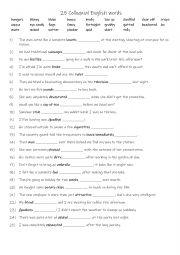
|
B1+ - C1 25 colloquial English words and their counterparts
Students learn colloquial vocabulary which is commonly used in everyday conversation. Students familiarise themselves with the 25 words and their meanings. Then they read the sentences to see which one could replace the more formal ones in bold font by writing that word on the given line. Answers on page 2.
Level: advanced
Age: 10-100
Type: worksheet
Downloads: 115
|
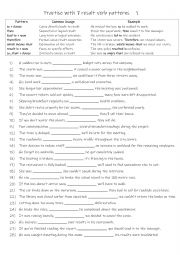
|
B1-B2 Practise with 7 result verb patterns 1
Students should learn these patterns because they are essential for expressing cause-and-effect relationships, which are fundamental in both spoken and written communication. Mastering these structures helps students connect ideas logically and cohesively, whether they are explaining events, giving reasons, or drawing conclusions. Additionally, und...
Level: intermediate
Age: 9-100
Type:
Downloads: 104
|
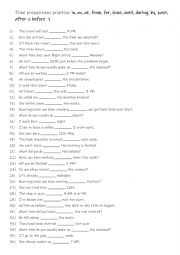
|
A2-B1 Time prepositions practise in, on, at, from, for, since, until, during, by, past, after & before 1
Learning time prepositions like in, on, at, from, for, since, until, during, by, past, and after is important for students because they are essential for expressing time relationships clearly and accurately. These prepositions help students talk about when things happen, how long actions last, and their sequence in time. Mastering them allows stude...
Level: intermediate
Age: 8-100
Type:
Downloads: 105
|
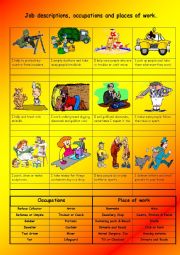
|
Job descriptions, occupations and paces of work
Students to read the descriptions then write the occupation and normal place of work using the given vocabulary at the bottom of the page. Part 4 of 4
Level: elementary
Age: 6-12
Type: worksheet
Downloads: 266
|
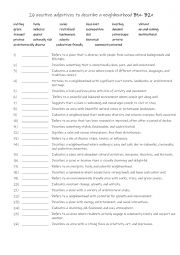
|
Negative adjectives to describe a neighbourhood B2-C1
19 negative adjectives to describe a neighbourhood B2-C1. Students read the definitons and choose from a list of adjectives in bold. Answers on page 2. After checking the answers, students in pairs or small groups use some of the adjectives to describe their neighbourhood.
Level: advanced
Age: 15-100
Type: worksheet
Downloads: 135
|
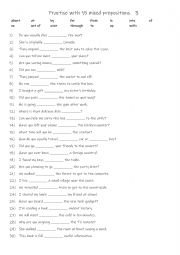
|
A1+-A2 Practise with 15 mixed prepositions 3
First, students need to familiarise themselves with the 15 prepositions and their use. Then they read the sentences to work out which preposition is needed to complete the gap-fill. Each tense is used 2 times! Answers on page 2
Level: elementary
Age: 8-100
Type:
Downloads: 112
|
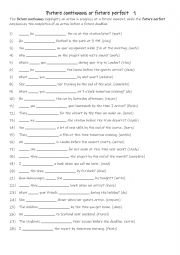
|
A2+-B1 Future continuous or future perfect 1
Learning the Future Continuous and Future Perfect tenses helps students express future actions with precision. The Future Continuous (will be + verb-ing) describes ongoing actions at a specific time in the future, such as "I will be working at 10 a.m.", while the Future Perfect (will have + past participle) refers to actions that will be completed ...
Level: intermediate
Age: 9-100
Type:
Downloads: 125
|
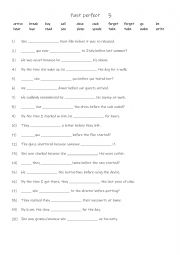
|
Past perfect 3
First, students need to familiarise themselves with the 20 verbs. Then they read the sentences to see which verb is needed to complete the sentence. Each verb is used 1 time! Answers on page
Level: elementary
Age: 10-100
Type:
Downloads: 121
|
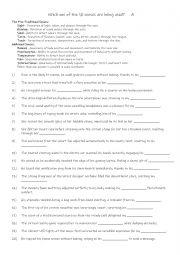
|
A2-B1 Which one of the 10 senses are being used 4
Learning about the traditional and additional senses helps students understand how humans perceive and interact with the world. It highlights how senses like sight, hearing, smell, taste, and touch, along with balance, proprioception, and temperature, provide essential information for navigating and responding to our environment. This knowledge is ...
Level: elementary
Age: 8-100
Type:
Downloads: 118
|
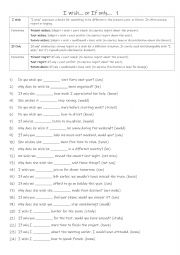
|
B1-B2 I wish�. or If only�. 1
Students should learn "I wish�" and "If only�" because these structures enable them to express regrets, desires, and hypothetical situations, adding emotional depth and complexity to their language (e.g., I wish I knew the answer or If only I hadn�t missed the train). They help students communicate feelings like hope, frustration, or disappointment...
Level: intermediate
Age: 10-100
Type:
Downloads: 102
|
|
|
|
|












